Are you interested in knowing where to live aboard on a boat (sail or motor)? Many liveaboard boaters start off by living in a marina. An alternative is to spend a season in an established live aboard anchorage. This article will define what they are, what happens in a typical live aboard anchorage and why you might want to consider calling one home for a season or several.

Furthermore, to whet your appetite, you’ll find part one of a two part video series about a very active live aboard anchorage in The Bahamas at the bottom of this article.
Many sailboat owners avoid marina’s and choose to spend the winter in one location at one anchorage, such as The Bahamas and the summer at another – perhaps the north east coast of America. Some boaters are chasing perfect climates and others are working towards finding the best place to live taking into consideration the hurricane, typhoon or cyclone season.
These type of boat owners effectively use their boat as a fairly stationary home that changes location only a couple times per year.
Now one of the biggest questions I get asked by my readers is, ‘how can I get my partner interested in sailing?’ And it’s usually a man asking about getting his wife onboard. Well…perhaps a first step is to sell your wife (or partner) on the idea of having an ocean view, sunny warm weather, surrounded by a social, helpful and kind community.
Your partner might not be interested in sailing, but perhaps a way to ease him or her in is to start with the live aboard lifestyle at anchorage. Later you can work on getting him or her out sailing?
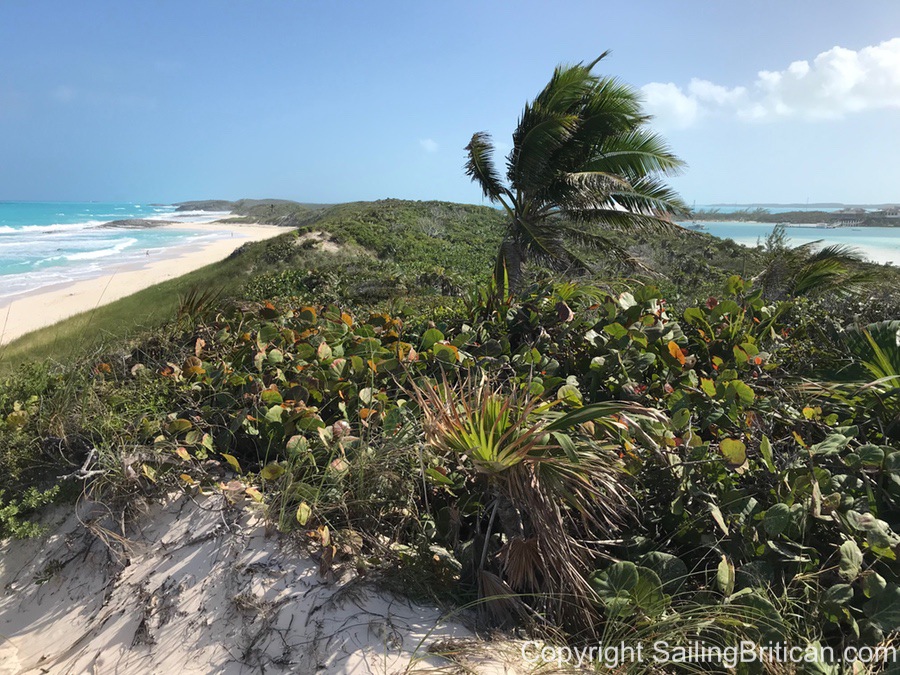
Let me get back to where to live aboard and liveaboard community anchorages…
Let’s take Georgetown in The Bahamas as an example. The area accommodates many long-term live aboard boaters, mainly from North America, during the winter. Similar to what is know as ‘snowbirds’ that fly south for the winter, some boaters sail south to take advantage of the beautiful turquoise blue waters, warm temperatures and hurricane free weather.
Often, live aboard anchorages are host to several boaters – sometimes hundreds thus forming a vibrant, energized and dynamic live aboard community.
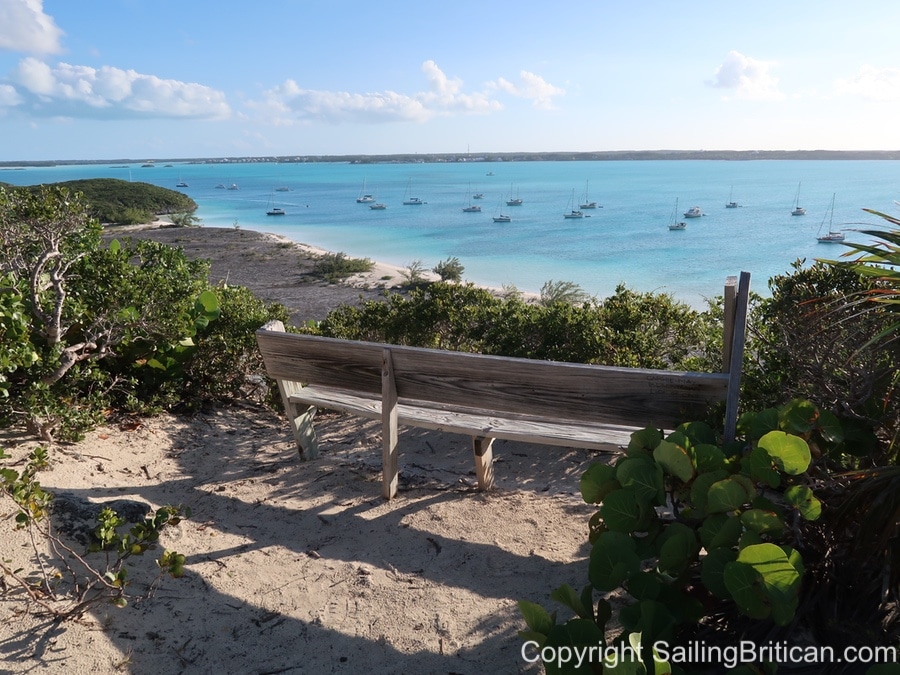
During our six week stay in Georgetown in February/March, there were around 200 boats in and around the area – some anchored for the full season and others just passing through.
But what are the benefits of staying in a seasonal anchorage such as Georgetown?
I’m going to list the things that we found in Georgetown but it’s important to note that other anchorages around the world are similar.
1. First of all, it’s free to anchor so that’s always a massive appeal. Yes, it does cost money to book into The Bahamas but for $300 you not only get to anchor for several months but you also can fish as much as you want!
2. The wear and tear on your boat is not as extensive as it would be if traveling frequently.
3. You can’t beat the weather.
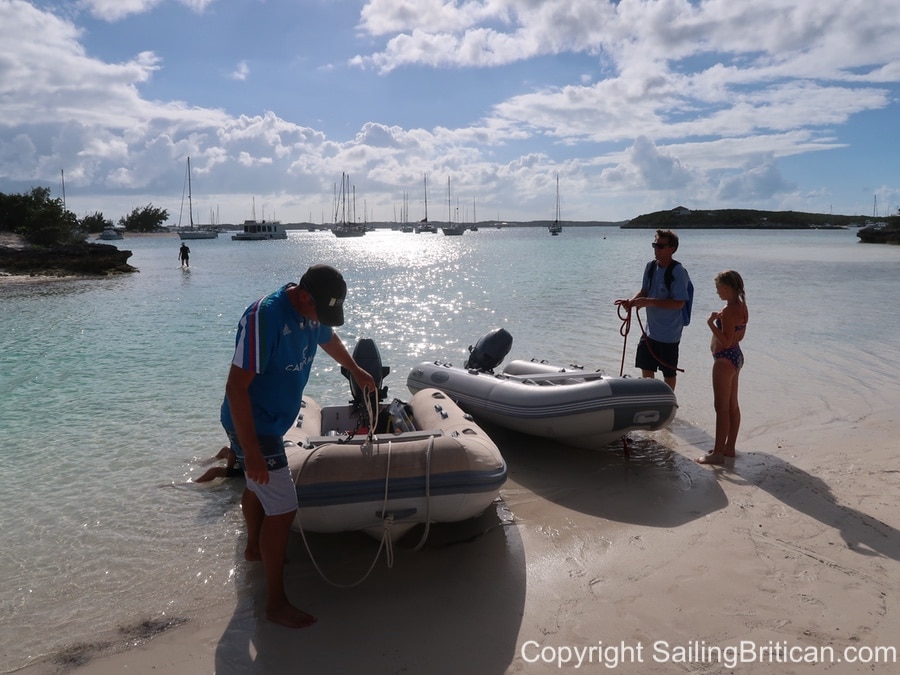
4. The surrounding area is set up for cruisers so that means that there’s a dinghy dock for the supermarket, one for each restaurant and even the cruisers beach has a line laid out for dinghies to be tied to.
5. The views and surrounding areas are absolutely breath taking. I mean just imagine waking up every day to views you see in this article (all photos were taken in and around the Georgetown, Bahamas area).
And there’s more…
6. You’re surrounded by likeminded people eager to socialize and support each other. The boating community is known for it’s kindness and support. We arrived in Georgetown having to sail onto anchor. A hose busted on our engine causing the engine bay to flood. Our starter motor short circuited and it was a stressful situation. (Read and watch Sailing in The Bahamas – Engine Failure)
Simon went to the bar and a cruiser came up to him saying, ‘you look like you need a beer.’ Simon had a new friend to commiserate with and they became so close that they now call each other brothers from another mother. Doesn’t a community like this answer the question of where to live aboard?
7. Strong and deep friendships are made when you stay in one place for a long time. Of course strong friendships can be made while cruising around too but when anchored for a long time you get to see other cruisers often.
Whether you decided to attend a talk given by another cruiser, meet up at the grocery store, go to beach church or have a hand at poker night. We found that many cruisers met up around 3pm on the beach just to enjoy a drink, play a game of volleyball or simply sit around and chat.
8. The community has a radio net that is often daily or at set days throughout the week. This enables boaters to express any medical emergencies, ask for help with boat problems, discuss the weather, announce community activities like aqua aerobics, bread making classes or an excursion on land.
There’s also a buy, sell or trade section. This part allows the community to get rid of what’s not needed and pick up something that’s wanted. New arrivals and departures are announced. And the net is often opened up to local businesses to promote a weekend BBQ at a restaurant, salon services from the hair dresser or a local church fundraising event.
9. Liveaboard communities, like Georgetown, are usually based outside a town. This means they’ll have standard amenities like a grocery store, laundry services, bank, boat services and even an airport. So…it’s only a short dinghy ride to get provisions and such.
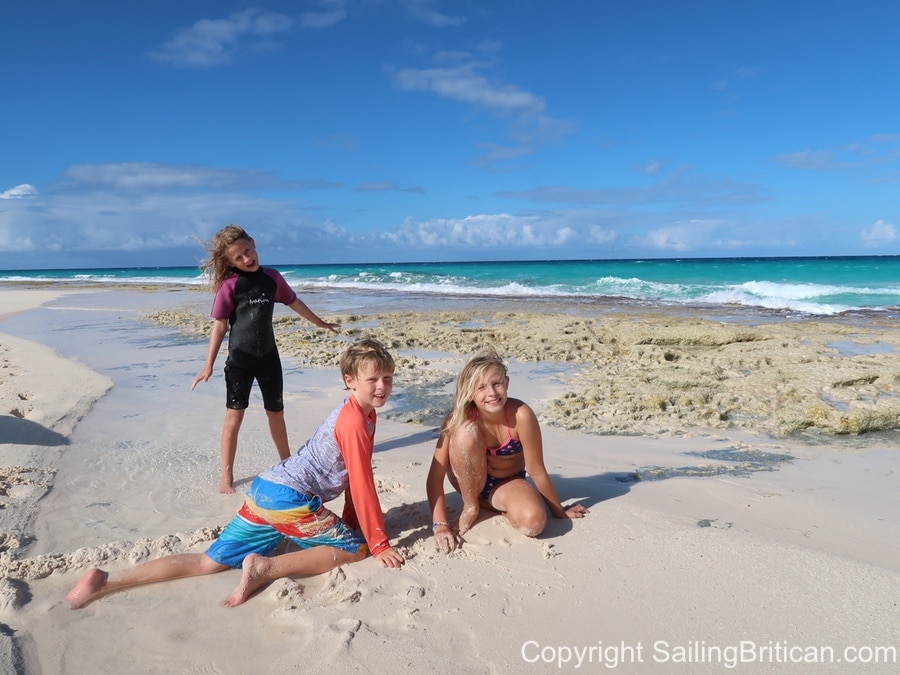
10. If you get tired of the scenery or the community you can take a break. You can often head in any direction to find a deserted island or quiet anchorage. In The Bahamas you might want to check out Bahamas Sailing Trip – First Stop Royal Island for a very quiet anchorage. When you’re tired of being alone you can head back to the community. And when you do you can show off all your pictures of the incredible lobsters and fish you caught.
And what about…
11. If you have been cruising around for a months or even years sometimes it’s nice to stop and grow some roots. (Or shall I say seaweed?) In a cruising community you can keep up the lifestyle without having to be on a constant move.
12. When choosing to return the following year it’s great to catch up with old friends and make new one’s.
13. Those cruisers that have kids will often find other kid boats staying the duration or coming and going. When we were in Georgetown there was an average of five kid boats ranging with kids from toddlers to teenagers. And one point I counted over 25 kids! Usually the children all do their homeschooling before lunch.
They then eat lunch and make plans for the afternoon. We enjoyed joint homeschooling sessions, time on the beach, going snorkeling, enjoying hikes, having sleep overs and more.
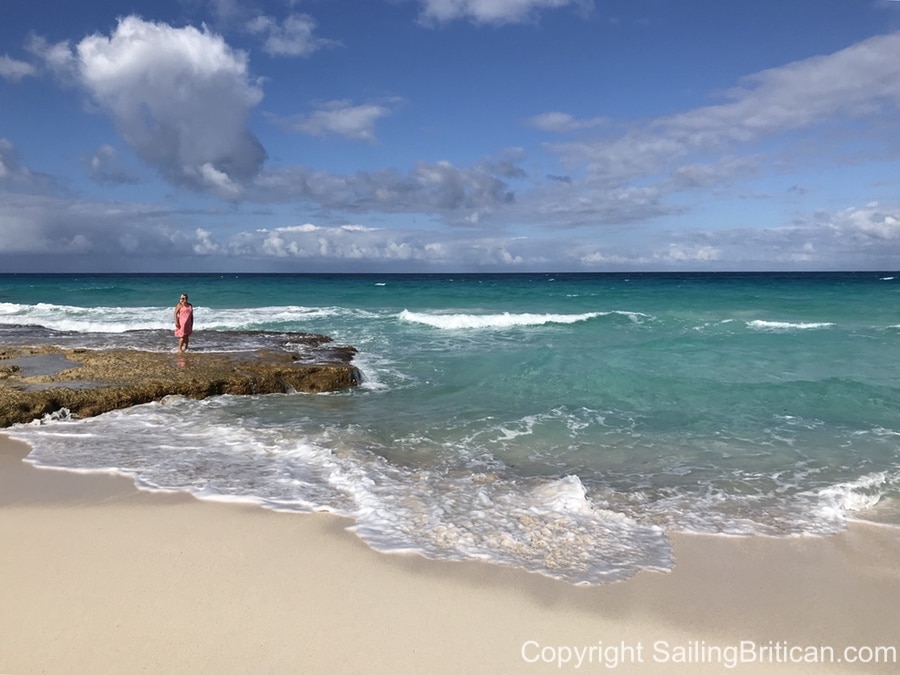
So…if you’re interested in getting into sailing but don’t want to head out around the world in your first season. OR you’ve been sailing around for a while and need a break, why not give an established live aboard anchorage a go?!
Below you’ll find a part one of two parts about our long stay in Georgetown, The Bahamas. The video will give you an idea of what the lifestyle is like. It will demonstrate what liveaboards do at anchor and on shore.
Liveaboard Lifestyle: Where To Live Aboard Video
Enjoy more of our season five 2018 articles and episodes here:
- Bahamas Sailing Trip – First Stop Royal Island Part 1 of 2
- Bahamas Sailing Trip – Royal Island Part 2 0f 2
- Sailing The Bahamas – Governor’s Harbour
- Swimming With Pigs In The Bahamas
- Tunderball Grotto & Iguana Beach in The Bahamas
- Sailing in The Bahamas – Engine Failure
Any questions, comments or thoughts?! Leave them below.
Visit our Sailing Britican sailing guides books shop if you’re thinking of buying a boat, are in the process of buying a boat or if you own a boat! All guides are digital. Some hard copy versions are found in our Etsy shop and on Amazon. The guides will help you to save money, avoid making mistakes and ultimately allow you to get out sailing quicker.
Check out our one-of-a-kind nautical t-shirts and other sailing gifts at our Sailing Britican Etsy shop. We have great stuff for men, women and children. Grab a t-shirt, bathing suit cover-up, spices for sailors, nautical pillow covers and more!
Profits from the guides and t-shirts are allowing us to keep this website going but it’s not enough!
If you enjoy what we offer please support us. Buy a guide/guides, a t-shirt, become a Patreon Patron (click the link for more information).
Or donate to the cause below through Paypal (see button below). Proceeds from the guides, Etsy shop and Patreon supports are keeping these articles and videos free. If you like what you see and want us to continue please support Britican today. (And if you already have, thank you very much!)
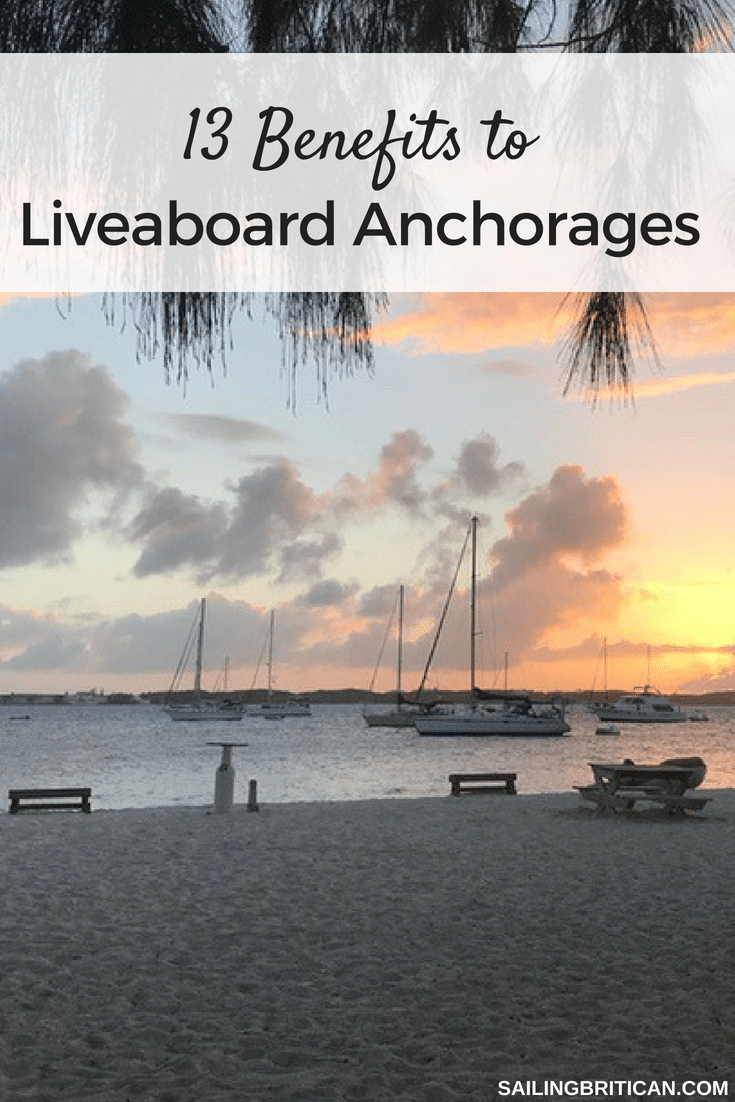
Hey Kim. Thank you for writing this article or guide! It is motivating. My wife and I have a 14 month old (Elizabeth) and we want to get out there within the next few years. We are currently shopping for the right boat. Anyway, part of our income comes from work that requires reliable internet. I am trying to figure out how we can live this lifestyle and keep part of our income coming in. What type of equipment would we need for our sailboat to ensure we get these services?
What percentage of these seasonal anchorages have reliable internet and cell services? Do you have a list of some of them that you could share?
Again Thank you for doing what you do! Safe Travels!
Dennis…you need to email me and let me know what part of the world you’ll be sailing in. I can then tell you about Internet. It’s definitely becoming easier to get a connection but it’s still hard to get a ‘good’ connection 😉
Hello Kim!
Thanks for all the great videos! I know questions about cost of cruising come up most often, and the answer is always, “It depends” followed closely by “All of it!”
But, I would like to know what your average monthly budget is just for mooring/marinas in a given month. I have heard that free anchoring in the Caribbean is becoming harder to find, so I’m wondering if it’s becoming More expensive just to travel about as far as tying up for the night?
Thanks!
We’ve anchored for free in the Caribbean every night. You just need a long chain and a good anchor! Our budget for marina’s and balls is $0. I don’t want to ever do either…however it can happen when you need a repair, etc. I don’t think it’s any more expensive to travel than it was several years ago 😉
Are these moorings available to trawlers as well.
Yes…as long as the trawler isn’t too large. There are a usually few trawlers in most anchorages 🙂
Hey guys, love your blog and this great write up about living aboard your vessel!
Have you ever tried Brunswick Landing Marina in Brunswick, GA? We have a really neat facility with a huge liveaboard community. Reach out to me if you guys would like to come stay with us for a few days and I’d be happy to give you a nice discount 🙂
Thank you Michael – if we ever make up back up to the States we’ll take you up on the offer 😉 Kim
Hi Kim,
Life is truly good, isn’t it?
We bought our first sailboat this year, a retired pair of 60’ers. Not ready to sail too far yet, but have been thinking about finding a rental boat to live on, or sort of like house sitting a boat, for a few weeks to a month or two, in the south. We are Canadians so winter is the time we are interested…any suggestions? I have been checking the internet but haven’t come across any good leads… we don’t need s 52′ fancy yacht!
Best,
Jean
Hey Jean – I wonder if any of the cruiser forums or groups (there are millions) would advertise boat sitting opportunities. We always get a boat sitter and many of our friends do too. Check out the areas you like and search for groups on Facebook. For example, there are Grenada Cruisers, St Augustine (Florida) Cruisers, and on the list goes. Winter is usually the active season in the Caribbean but it’s when the cruisers lay up on the Med – might be worth looking at the Med Cruising Groups. Smiles, Kim